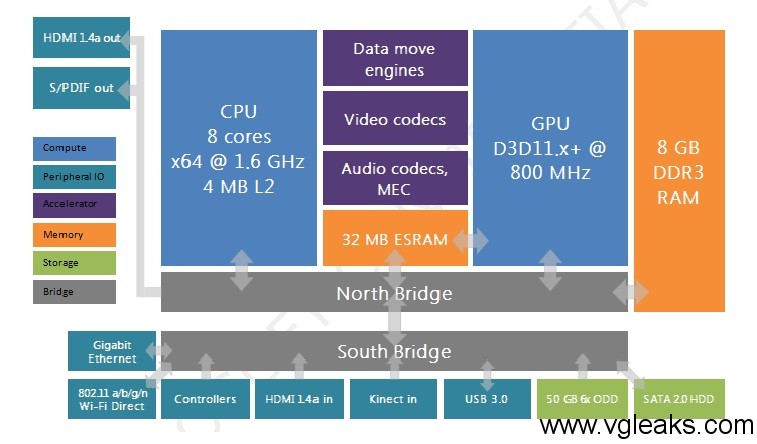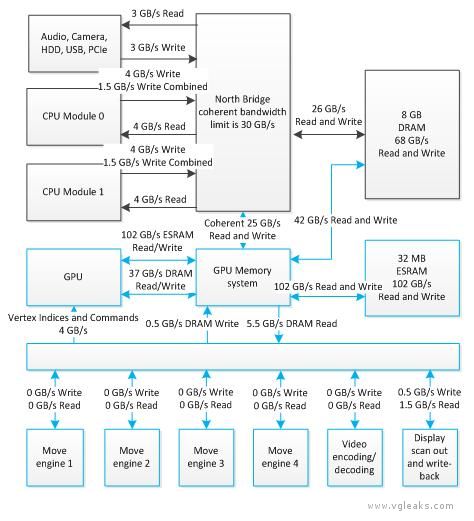Where does it get power from?
See XspiderMX's post, thats what I was envisioning, one of MS' chunky adapters or cables with chunky connector on the end.
Follow along with the video below to see how to install our site as a web app on your home screen.
Note: This feature may not be available in some browsers.
Where does it get power from?
See XspiderMX's post, thats what I was envisioning, one of MS' chunky adapters or cables with chunky connector on the end.
I doubt the box will have a proprietary AV connector on it. Most likely it'll just have HDMI and optical outputs. If they can power an adapter over HDMI, then I can imagine a short adapter (male HDMI -> female HDMI + RCA audio).
I'd be interested to know if the 48kHz sample rate is an absolute system limitation or whether it only applies to audio processed through the hardware processing pipeline. I expect support for higher sample rates up to the limit of the HDMI standard to be possible, but it would be nice to know for sure.
I'd also like to know if the downsampling to stereo for headsets implements any form of virtual surround.
What about USB?
Sure, they could support it that way with a small usb DAC. No matter how they do it (if they do it), I don't think an analog output for audio is going to come free in the box.
I hope, at least, toslink output....
Shouldn't be. The highest frequency can't get higher just from mixing, and there's no point resolving the frequency at higher resolution than 48 kHz. Heck, most of the audio is mp3 anyway, so ultimate quality is hardly important. If the audio processing is performed in 32 bit floats at 48 kHz, that's as good as anyone'd need.The sample rate is interesting. There's really no reason to output more than 48 kHz audio, but in terms of internal processing of audio, I wouldn't really know if there are benefits from 96 kHz.
The "all audio output" part would clearly eliminate my theory. But that seems like quite a bold move.
No, It's true, HDMI is the only form of video output.
The sample rate is interesting. There's really no reason to output more than 48 kHz audio, but in terms of internal processing of audio, I wouldn't really know if there are benefits from 96 kHz. I'm not sure how important oversampling is when you're working entirely in the digital domain. The mics are analog input, but I don't think there's a justifiable reason to process that audio stream with a sampling rate of 96 kHz. Aren't most Bluray discs 24-bit/48kHz audio streams?
Do you have confirmation that's not just the devkits?
Because it cuts out a lot of "emerging" markets.
Do you have confirmation that's not just the devkits?
Because it cuts out a lot of "emerging" markets.

It doesn't matter if the source material has higher sample rate since 96kHz/192kHz digital audio is 100% scam anyway: http://people.xiph.org/~xiphmont/demo/neil-young.htmlI think there is. If the source material contains higher sample rate audio, HDMI can carry it and the audio receiver can accept and output it, having the transport be the limiting factor would be disappointing. Just talking about media here, though. Game audio would probably see little if any benefit from support for higher sample rates given the typical quality of game audio assets.
I think there is. If the source material contains higher sample rate audio, HDMI can carry it and the audio receiver can accept and output it, having the transport be the limiting factor would be disappointing. Just talking about media here, though. Game audio would probably see little if any benefit from support for higher sample rates given the typical quality of game audio assets.
It doesn't matter if the source material has higher sample rate since 96kHz/192kHz digital audio is 100% scam anyway: http://people.xiph.org/~xiphmont/demo/neil-young.html
I dunno though maybe they develop some games for your pet cat and it would probably enjoy the higher frequency range (that is if your amp and speakers could do it) as cats are quoted to have frequency range up to ~80kHz (the numbers you can find seem to differ from 64kHz-100kHz).
Sorry for OT but couldn't resist.
Good link. I don't think it's off topic. It perfectly explains why they may have forgone a processor and the necessary bandwidth that would have been required to deal with 96 kHz audio.

Was this posted? Vgleaks article updated?
It looks like DDR3 BW (68GB/s) is shared between CPU and GPU:
25GB/s for CPU and 42GB/s for GPU.
And bandwidth between GPU memory system and DDR3 is 42GB/s, but only 37GB/s for GPU.
http://www.vgleaks.com/durango-memory-system-example/
37GB/s isn't too low for a GPU?
